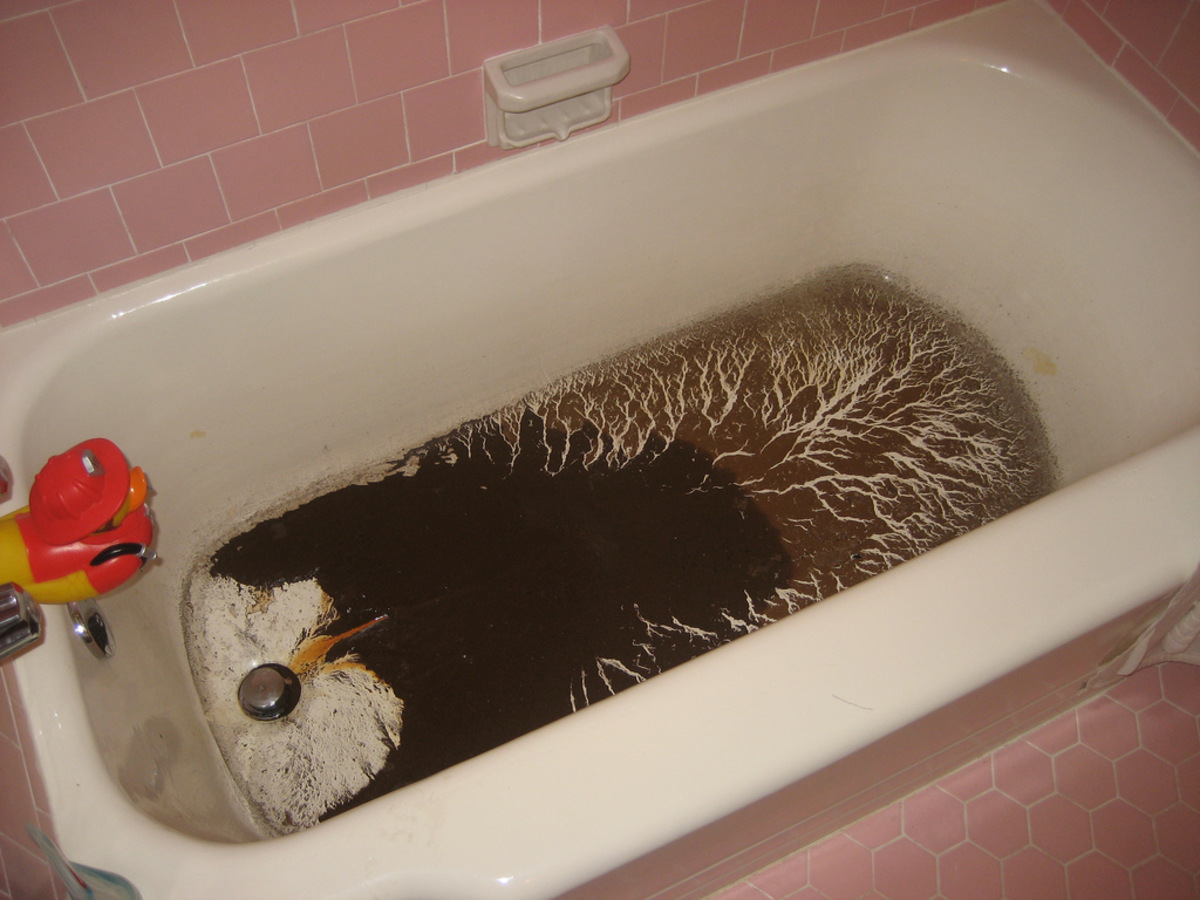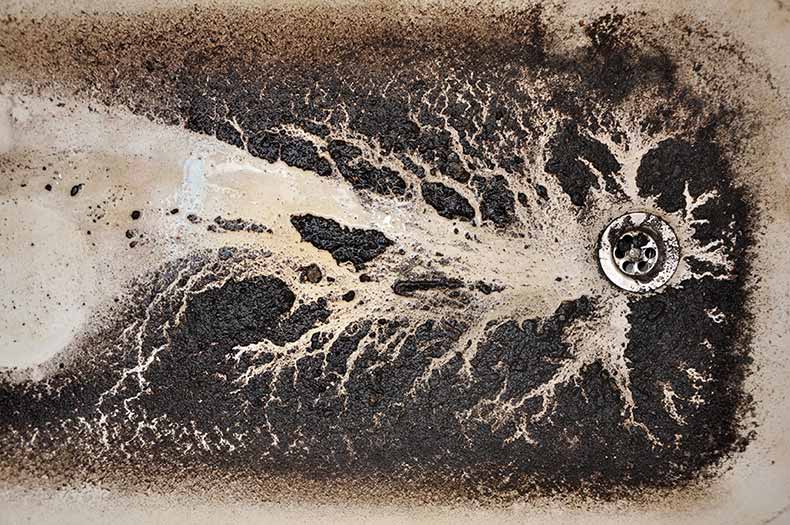My Definitive Explanation: Waste Coming Up Through the Bathtub
My Definitive Explanation: Waste Coming Up Through the Bathtub
Blog Article
Just how do you actually feel in regards to Water Coming up Bathtub Drain?

Sewer back-up in the bathtub can be an upsetting and unsanitary problem for any homeowner. Not just is it inconvenient, however it likewise presents significant health and wellness dangers and indicates underlying problems with the plumbing system. Recognizing why sewer is coming up through the bathtub is crucial for taking ideal action to address the trouble properly.
Intro to the Issue
Typical Factors for Sewage Back-up
Clogs in the Drain Line
Among one of the most common causes of sewage backup is a blockage in the sewer line. This can occur because of the build-up of debris, oil, or foreign items in the pipelines, avoiding proper circulation and triggering sewer to back up right into your bath tub.
Tree Root Breach
Tree roots looking for wetness and nutrients can penetrate sewage system lines through tiny cracks or joints. Gradually, these origins can grow and increase, creating considerable damage to the pipelines and resulting in sewer back-up concerns.
Comprehending the Problem
When sewer draws back up into the tub, it's a clear indication of an issue with the drainage system. The wastewater that needs to be moving far from your home is instead locating its way back right into your living space, which can cause considerable damage and carcinogen.
Prospective Causes
Numerous factors can add to sewer backup in the tub. From clogs in the sewage system line to concerns with the plumbing infrastructure, recognizing the source is important for locating a remedy.
Aging Infrastructure
Older homes may have obsoleted plumbing systems that are much more susceptible to deterioration, cracks, and degeneration. As pipes age, they come to be much more susceptible to leakages and blockages, enhancing the possibility of sewer backup cases.
Heavy Rainfall or Flooding
During durations of heavy rainfall or flooding, the drain system may come to be overwhelmed with excess water, causing backups and overflows. This can lead to sewage supporting right into bathtubs and other fixtures inside the home.
Signs of Sewage Backup
Foul Odors
Unpleasant smells emanating from drains or components, especially in the bathroom, might indicate sewer back-up concerns. These smells are usually solid and relentless, signaling a problem that requires prompt focus.
Slow Draining Fixtures
Tubs, sinks, and commodes that drain slowly or otherwise in any way could be experiencing sewage backup. If several components are affected at the same time, it's most likely that the problem originates from a common factor, such as the major sewer line.
Gurgling Noises
Odd gurgling or bubbling noises originating from drains pipes when water is running in other places in the house are a measure of air entraped in the plumbing system. This air accumulation can arise from sewage backup and ought to be explored immediately.
Wellness Risks Associated with Sewage Backup
Contamination of Supply Of Water
Sewage backup can pollute the water in your house, posturing a major wellness threat to you and your household. Exposure to contaminated water can result in intestinal concerns, skin infections, and various other diseases.
Mold Growth
Wetness from sewer back-up can produce optimal conditions for mold and mildew development in your home. Mold and mildew spores can aggravate breathing problems and trigger allergies in sensitive people, making prompt clean-up crucial.
Spread of Condition
Sewer consists of hazardous bacteria, viruses, and bloodsuckers that can cause a variety of illness, including hepatitis, cholera, and gastroenteritis. Entering contact with sewer or polluted surfaces places you in jeopardy of infection.
Tidying up After Sewage Back-up
Sanitation Procedures
Completely disinfect and disinfect affected locations after sewage backup to get rid of dangerous germs and protect against mold and mildew development. Usage appropriate cleaning items and protective equipment to guarantee safe and efficient cleaning.
Reconstruction of Impacted Areas
Repair any kind of damages to floor covering, wall surfaces, or fixtures brought on by sewer backup. Relying on the extent of the damages, you might need to change carpets, drywall, or other products to restore your home to its pre-loss problem.
Immediate Actions to Take
Switching Off Water System
In the event of sewage backup, it's important to shut off the water supply to stop more contamination and damages. Find the primary water shutoff valve in your home and shut it off up until the issue can be dealt with.
Contacting a Specialist Plumber
Taking care of sewer backup is not a do it yourself work. Get in touch with a qualified plumber with experience in handling sewage-related concerns to analyze the situation and perform needed fixings or cleanups.
Staying Clear Of Contact with Contaminated Water
Until the sewage back-up is fixed, avoid contact with infected water to prevent the spread of microorganisms and pathogens. Wear protective gear if you need to remain in the affected location and wash your hands completely afterward.
Safety nets
Routine Upkeep of Sewage System Lines
Set up routine inspections and upkeep of your sewer lines to determine and deal with prospective concerns before they rise into significant problems. This can consist of cleaning out particles, inspecting for tree origin intrusion, and repairing any type of broken pipelines.
Installing Backwater Shutoffs
Think about mounting bayou shutoffs in your plumbing system to stop sewer from receding right into your home during periods of heavy rainfall or flooding. These valves immediately close when water draws back up, shielding your home from contamination.
Appropriate Disposal of Family Waste
Stay clear of flushing anything besides toilet paper and human waste down the toilet to prevent clogs and obstructions in the sewer line. Dispose of grease, oil, and various other home chemicals appropriately to minimize the risk of plumbing problems.
Sewage Coming Up Through the Bathtub?
Understanding the Plumbing System:
To understand why sewage is coming up through your bathtub, it is essential to have a basic understanding of the plumbing system. The plumbing system is a complex network of pipes, valves, fixtures, and drains that work together to provide clean water to your home and remove waste and sewage. The system consists of two parts: the supply system and the drainage system.
The supply system brings clean water to your home, while the drainage system removes wastewater from your sinks, toilets, showers, and bathtubs. The drainage system is connected to the main sewer line, which carries the wastewater to the municipal sewage treatment plant or septic tank.
Causes of Sewage Coming Up Through the Bathtub:
Sewage coming up through the bathtub can be caused by various factors. Some of the most common causes are:
Clogged Drain Pipes:
One of the most common reasons for sewage coming up through the bathtub is a clogged drain pipe. Over time, debris, hair, soap scum, and other foreign objects can accumulate in the drain pipes, leading to a blockage. This can cause the wastewater to back up and come out of the bathtub.
Main Sewer Line Blockage:
Another reason for sewage coming up through the bathtub is a blockage in the main sewer line. The main sewer line connects your home’s drainage system to the municipal sewer system. If the main sewer line gets clogged due to tree roots, grease buildup, or other obstructions, it can cause sewage to back up into your home’s plumbing fixtures, including the bathtub.
Sewage Backup:
Sewage backup is another common cause of sewage coming up through the bathtub. Sewage backup occurs when there is a problem with the municipal sewer system, such as heavy rainfall, flooding, or a malfunctioning pump. When this happens, sewage can flow back into your home’s drainage system and cause sewage backup in your plumbing fixtures, including the bathtub.
Broken or Damaged Pipes:
Finally, broken or damaged pipes can also cause sewage to come up through the bathtub. Over time, pipes can deteriorate due to age, corrosion, or external factors such as shifting soil. When pipes break or crack, wastewater can leak out and cause sewage backup in your plumbing fixtures.
Signs of Sewage Coming Up Through the Bathtub:
Some of the signs that sewage is coming up through your bathtub include:
Foul odor: If you notice a strong, unpleasant odor coming from your bathtub drain, it could be a sign of sewage backup. The smell is caused by the buildup of organic waste in the pipes. Slow drainage: If your bathtub drains slowly or not at all, it could be a sign of a clogged drain pipe or a more severe problem with the main sewer line. Gurgling sounds: If you hear gurgling sounds coming from your bathtub drain or other plumbing fixtures, it could indicate that air is trapped in the pipes due to a blockage. Prevention Measures:
The best way to prevent sewage from coming up through the bathtub is to take preventative measures. Here are some practical tips:
Regular Drain Cleaning:
Regular drain cleaning can help prevent clogs and keep your pipes in good condition. You can use a plunger, drain snake, or enzymatic drain cleaner to remove any buildup of hair, soap scum, or other debris in your bathtub drain.
Proper Waste Disposal:
Improper waste disposal can also contribute to sewage backup. Avoid flushing non-biodegradable items, such as paper towels, feminine hygiene products, or wipes down the toilet. Also, be mindful of what you pour down the drain, such as grease, oil, or coffee grounds, as they can cause clogs.
Professional Plumbing Maintenance:
Regular plumbing maintenance can help prevent plumbing emergencies, such as sewage backup. A professional plumber can inspect your pipes, identify any potential issues, and perform preventative measures, such as hydro jetting, to clean your pipes.
Hydro Jetting:
Hydro jetting is a powerful method that uses high-pressure water to clean the pipes thoroughly. It can remove even the most stubborn clogs and prevent future blockages.

I came across that page on while doing research the web. In case you liked our blog post plz don't forget to share it. I value your readership.
Quote & Schedule
Report this page